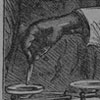Who Owns this Land?
Michael O'Malley, Associate Professor of History and Art History, George Mason University
Guide to Using Historical Documents
Historians divide their materials into primary and secondary sources. Primary sources are documents from the time being studied. Books, newspaper articles, letters, diary entries, movies, speeches or photographs can all be primary sources. Primary sources are documents from the time you are studying.
Secondary sources are materials produced by people in a later period. For example, Theodore Roosevelt's speeches are primary sources. Edmund Morris' 1982 biography of Roosevelt is a secondary source. Newspapers from 1967 are primary sources if you are studying the sixties, and especially if you are studying the year 1967. But any book or magazine article or movie published much after 1967 is a secondary source.
There are a few more complicated cases. For example, a memoir of the sixties by a singer like Bob Dylan would be a primary source, even if it was published in 1998, because it contains the recollections of someone who was alive in 1967. But a book about Bob Dylan written by an historian of the same age would be a secondary source. In the simplest sense, primary sources are things produced during the time you are studying.
In this class you will be asked to work extensively with primary sources. This means analyzing and making sense of documents from the time period, largely on your own. How do you do this?
One of the first things you will notice about primary sources is that they don't do exactly what you want. They often approach their subject in ways that seem odd to us, or indirect. Good historians recognize this as important. Very often questions that are important to us had not even been considered by people in an earlier period. Modern readers are often concerned with racism, for example. But Americans writing in 1900 used racist forms of expression casually.
The past, it's sometimes said, "is a foreign country." So approach historical documents as records of a different world. Try to have "fresh eyes." If the documents you read frustrate you, if they fail to tell you what you want, think about why.
There are a number of points you should be sure to consider with each document.
- Who wrote or produced this document? What might have been at stake for them? What was the author's job? Whose interests did he represent?
- What is the date? You should check the date on the document first. It's important to know, as precisely as possible, what was going on at the time.
- Who was the audience for this document? What did they want to know or hear?
- What is the essence of the argument--what's the point? Sometimes there is a single point, sometimes there are many points which together lead to a single conclusion.
- How did the author make the case? Was the language tough and aggressive, or gentle and conciliatory? Was it designed to inflame emotions, or appeal to logic? More subtly, does the kind of language used tell you anything less obvious about the author and the time?
History is a creative endeavor. Try to approach these sources without preconceived ideas, and open your imagination to the difference between the past and the present. You are constructing an interpretation, an argument. Your papers and essay answers will be your opinions, supported by historical evidence. We welcome speculation, creativity, and risk taking, but we insist that you prove your arguments.
Updated | April 2004
